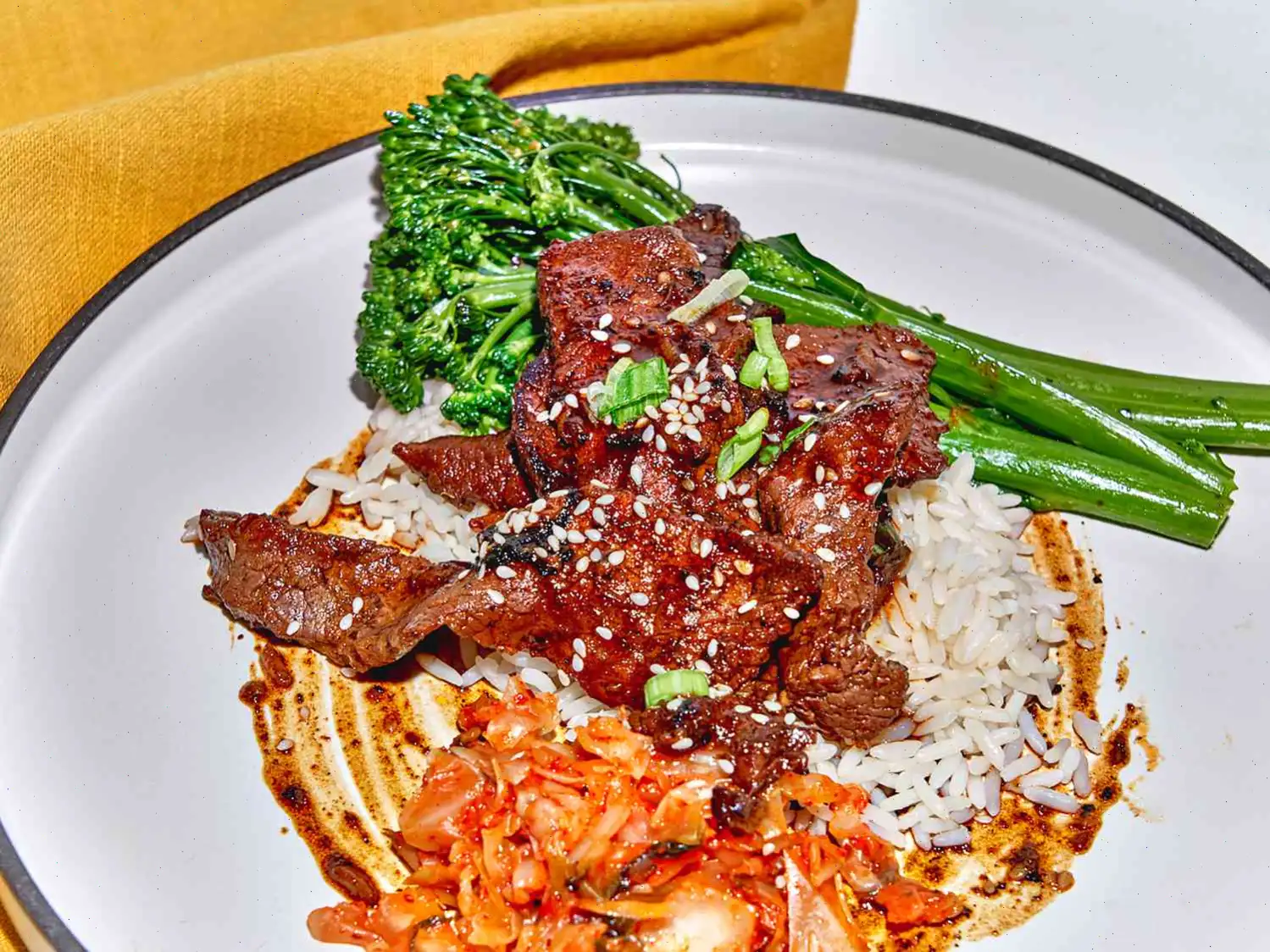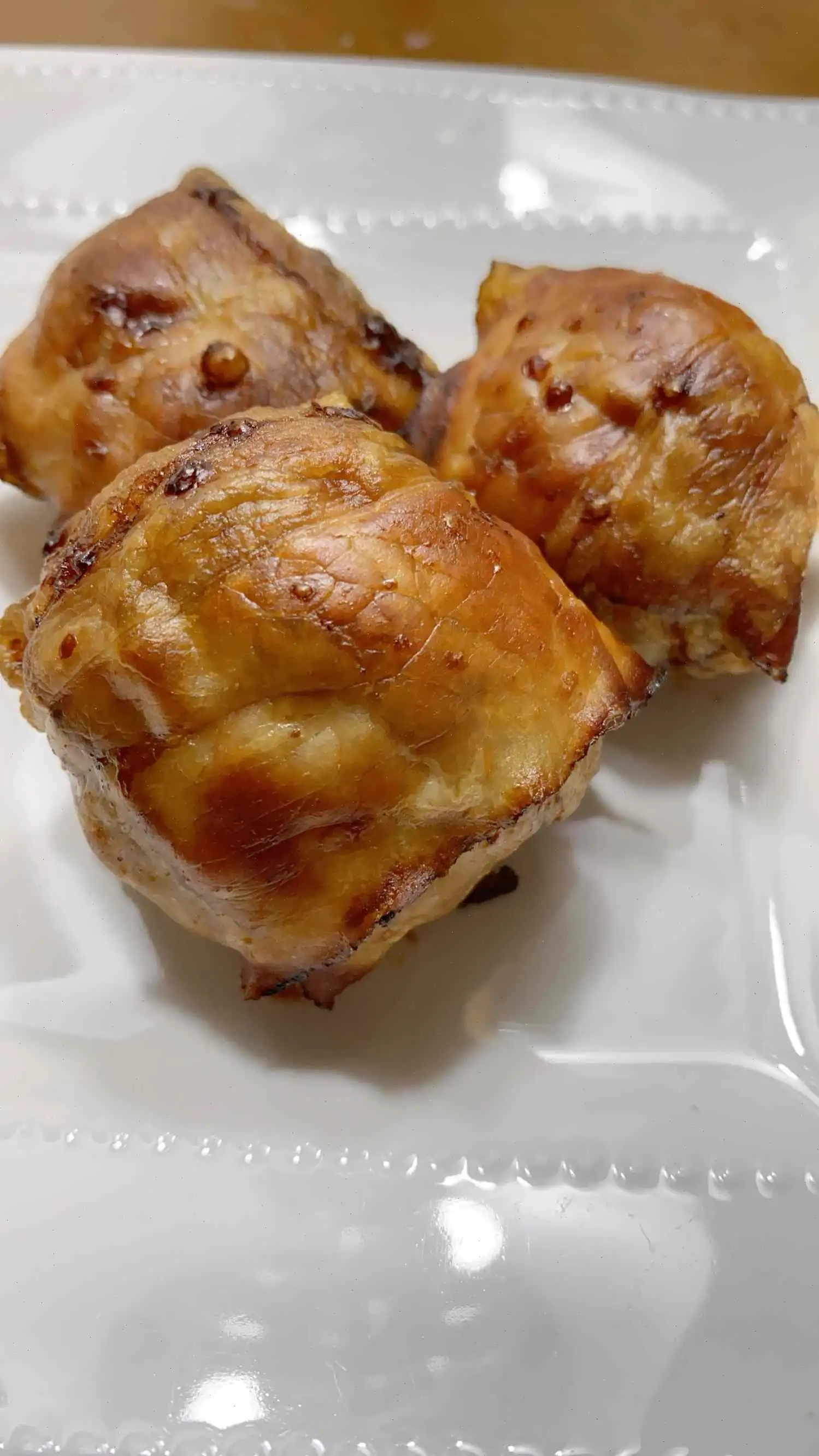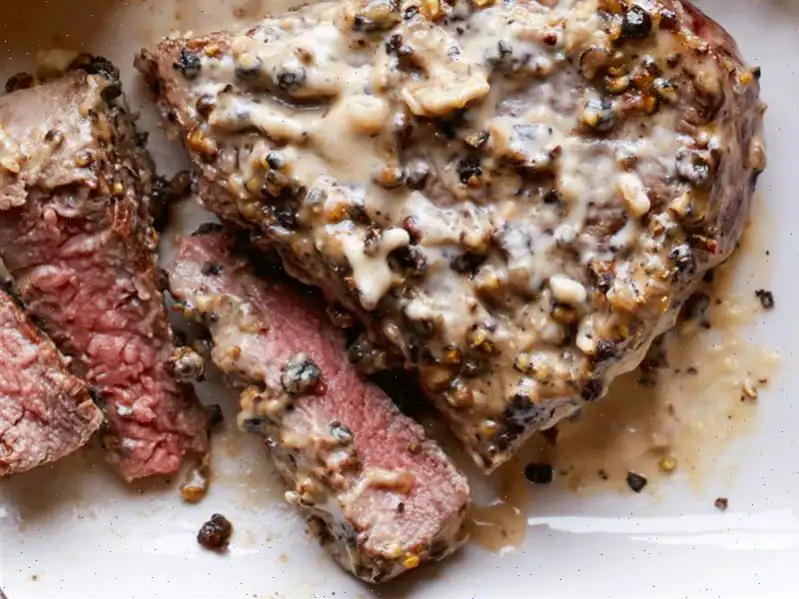
Tri-Tip Bulgogi Recipe
Bulgogi (Korean BBQ Beef)
Servings: 6
Ingredients
- Marinade:
- 1 pear, cut into chunks
- 1/2 onion, cut into chunks
- 1 thumb-sized piece fresh ginger, cut into chunks
- 1/2 cup soy sauce
- 2 cloves garlic
- Bulgogi:
- 3 pounds beef tri-tip
- 2 tablespoons grapeseed oil
- 3 tablespoons gochujang (Korean hot pepper paste)
- 2 tablespoons rice vinegar
- 1 tablespoon white sugar
- 1 tablespoon minced fresh ginger
- 1 garlic clove, minced
- 1/2 cup water
- Salt and freshly ground black pepper to taste
- 1 tablespoon sesame oil
- 1 tablespoon sesame seeds
- 4 scallions, sliced, or to taste
- 1 (8 ounce) package cooked microwave basmati rice
- Kimchi for serving
- Steamed vegetables for serving
Directions
- Step 1: Combine pear, onion, ginger, soy sauce, and garlic cloves in a blender or food processor. Pulse until the marinade is smooth.
- Step 2: Place the tri-tip into a resealable plastic bag and pour the marinade over the meat. Seal the bag and refrigerate for at least 4 hours or overnight for the best flavor.
- Step 3: After marinating, slice the tri-tip thinly against the grain.
- Step 4: Heat grapeseed oil in a skillet over medium-high heat. Once the skillet is hot, sear the meat for about 1 minute on each side until it becomes nicely charred. Remove the meat from the skillet.
- Step 5: In the same skillet, add gochujang, rice vinegar, soy sauce, white sugar, minced garlic, minced ginger, and water. Stir the mixture until smooth and well-blended. Let it simmer for 3 minutes.
- Step 6: Return the seared meat to the skillet and simmer in the sauce for 1-2 minutes, or until heated through. Season with salt and pepper to taste.
- Step 7: Once the meat is coated in the sauce, remove the skillet from the heat. Drizzle the bulgogi with sesame oil and sprinkle sesame seeds on top.
- Step 8: Microwave the basmati rice for 90 seconds, or according to the package directions.
- Step 9: Plate the bulgogi along with the rice, kimchi, and steamed vegetables. Garnish with sliced scallions for added flavor and color.
Nutrition Facts (per serving)
- Calories: 700
- Total Fat: 33g (43% Daily Value)
- Saturated Fat: 1g (5% Daily Value)
- Cholesterol: 188mg (63% Daily Value)
- Sodium: 3094mg (135% Daily Value)
- Total Carbohydrates: 33g (12% Daily Value)
- Dietary Fiber: 4g (13% Daily Value)
- Total Sugars: 11g
- Protein: 66g (132% Daily Value)
- Vitamin C: 27mg (30% Daily Value)
- Calcium: 114mg (9% Daily Value)
- Iron: 6mg (35% Daily Value)
- Potassium: 1188mg (25% Daily Value)
* Percent Daily Values are based on a 2,000 calorie diet. Your daily values may be higher or lower depending on your calorie needs.
History and Origins of Tri-Tip Bulgogi
Bulgogi, literally meaning "fire meat" in Korean, has a rich history dating back to the Goguryeo era (37 BCE 668 CE), where marinated grilled meats were a staple for royalty and military feasts. Traditionally made with thin slices of sirloin or ribeye, the modern adaptation using tri-tip has emerged due to the cuts affordability and robust flavor. Tri-tip bulgogi combines the classic Korean marinade techniques with a cut of beef prized for its tenderness when sliced against the grain, providing a unique texture compared to conventional bulgogi.
Regional Characteristics
This variation of bulgogi is especially popular in the southern regions of Korea, where beef tri-tip is more readily available and grilling culture thrives. Unlike the northern provinces, which often favor pork or seafood, southern Korean cuisine emphasizes marinated beef dishes with a balance of sweet, savory, and spicy flavors. The addition of pear in the marinade, common in southern recipes, helps tenderize the meat while imparting a subtle natural sweetness that complements the heat of gochujang.
Difference from Similar Dishes
While traditional bulgogi uses sirloin or ribeye, tri-tip bulgogi stands out because of the cuts firmer texture and triangular shape, which allows for slightly thicker slices that still absorb the marinade deeply. Compared to galbi, which uses short ribs, tri-tip bulgogi is leaner but retains a rich beefy flavor. Additionally, the inclusion of gochujang in the sauce distinguishes it from classic bulgogi, which is often sweeter and soy-based, giving tri-tip bulgogi a mild kick and a slightly caramelized finish when seared.
Typical Serving Settings
Tri-tip bulgogi is commonly served at Korean barbecue restaurants, home gatherings, and festive occasions. It pairs perfectly with steamed rice, kimchi, and lightly sauted or steamed vegetables. In Korea, it is often presented family-style, allowing diners to assemble their own wraps with lettuce, rice, and banchan. Its versatility also makes it a popular choice for casual weeknight dinners or for impressing guests at dinner parties.
Interesting Facts
- The use of pear in the marinade is not just for flavor; its natural enzymes break down protein fibers, tenderizing the beef.
- Tri-tip is a relatively recent addition to Korean-style bulgogi, becoming popular outside Korea due to the cuts affordability and flavor.
- Bulgogi was traditionally cooked over open flames, and modern skillet methods aim to replicate that slight char and smokiness.
- Sesame oil and seeds are almost always added at the end of cooking to preserve their aroma and nutty flavor, enhancing the dishs authenticity.
- Tri-tip bulgogi demonstrates the adaptability of Korean cuisine, merging traditional techniques with cuts of meat more commonly found in Western markets.
You can listen to this recipe in AI audio format. Simply click the play button below to listen to the content in a format that suits you best. It’s a great way to absorb information on the go!
FAQ about Tri-Tip Bulgogi Recipe
Comments
Nicole Scott
10/13/2022 12:43:37 AM
I opted for papaya instead of pear. Perfect 10/10 rating!
Scott Gomez
05/02/2024 01:46:30 PM
I believe it would be enhanced with some delicious side dishes to complement the flavors. Do you have any suggestions?








